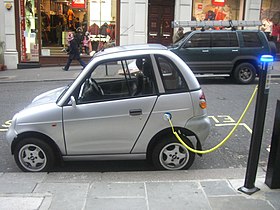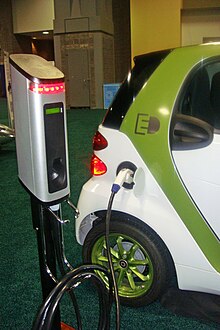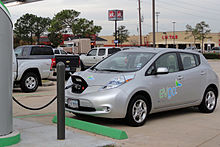Thinking Back the Scientific Discipline of Green Cars
Environmental-friendly concepts are the nation’s long-term aim to fight global warming crisis in our surroundings. Survey poll has measured and stated that our earth is dying slowly due to the exponential increase of fuel-emission gases, pollution and other toxic waste.  The focus delineates vehicle exhaust as well as industrial factories, which contributes a broad impact to air pollution harming the ecodiversity of life. Thus, we are grateful that technology has intruded to the convergence of reducing detrimental unpleasant gas and thereby make use of hybridized electric-powered engines in the auto industry.
The focus delineates vehicle exhaust as well as industrial factories, which contributes a broad impact to air pollution harming the ecodiversity of life. Thus, we are grateful that technology has intruded to the convergence of reducing detrimental unpleasant gas and thereby make use of hybridized electric-powered engines in the auto industry.
Because green cars did not grasp the attention of automotive previously, it was diesel and other burning-fuel emissions that utilize one of the basic aspects to get the engines running. Probably history did criticize the use of car batteries and electric engines towards the aerodynamic mechanics in automobiles that are too costly. It will take years before drivers can accommodate the price of using such expensive speculations.  Not long enough, automobile researchers and car specialists have brought back the idea of implementing “green” to vehicles at an affordable expense.
Not long enough, automobile researchers and car specialists have brought back the idea of implementing “green” to vehicles at an affordable expense.
Alternative methods including power electric motors, fuel cells and renewable sources (biofuel) are currently exploited in modern motifs of green cars and contemporary hybrid autos today.
In discussion of the emergence of General Motors Production in 1996, the company developed a concept of using electric vehicle for the purpose of leasing it at an affordable price. It was the Alternating-Current (AC) motor and battery packs (lead-acid and nickel-metal hydride) that stroke drivers to utilize efficient energy-saving mechanics. Even though charging would take 6 to 8 long hours, it managed to accelerate at a speed to 80 mph. However, GM EV-1 vehicles were eradicated later after generating more than a thousand units of vehicles.
As technology advances in the use of various economical batteries, the science of lithium-ion battery is born. It has been discovered that lithium-based batteries are more efficient than other ionic elements. For instance, Reva Electric Car Company is presently producing G-Wiz lithium-ion batteries with exquisite specs for an urban rear wheel drive. L-ion brand produces top speed up to 51 mph and is much lighter than previous G-Wiz battery model.
 The new generation of hybrid and green cars continue to take the trend in automotive industry and bring many drives to the test. Fuel cell powered cars, on the other hand, uses proton exchange membrane (PEM) that effectively put an interest in using compressed hydrogen, methanol or catalyzed hydride-sodium agents to run under various auto brands.
The new generation of hybrid and green cars continue to take the trend in automotive industry and bring many drives to the test. Fuel cell powered cars, on the other hand, uses proton exchange membrane (PEM) that effectively put an interest in using compressed hydrogen, methanol or catalyzed hydride-sodium agents to run under various auto brands.
Toyota RAV 4 is already using this fuel-cell efficient battery to drive at an incredible range of 500 kph while GM Zafira can reach 300 miles during its actual test drive.
Audi’s A2 2004 motif automobile design has infused the use of a 66 kilowatt fuel-cell hybrid ranging at 137 mph whereas the prestigious Ford Explorer consumed hybrid battery production streaming at 560 kph.
Tags: electric-powered engines, Ford Explorer, green cars, Toyota RAV 4